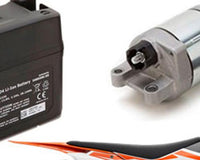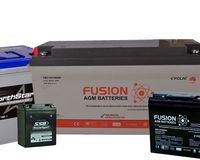Table of Contents
The durability of AGM batteries, which do not require frequent charging, is one of the many benefits of using this battery. The way you charge your AGM battery, on the other hand, will have a big impact on how long it lasts. Due to their numerous advantages over flooded batteries, race cars, RVs, and even boats are all switching to AGM batteries.
In addition, AGM batteries are made to last for a long time — several years, depending on how you maintain them. Compared to flooded batteries, AGM batteries also take less effort to maintain.
AGM Batteries Should Never Be Partially Charged
In order to preserve their capacity, all absorbent glass mat batteries must be fully charged to 100 percent. When AGM batteries are only partially charged, they lose their ability to charge to their maximum capacity over time. If you only charge your AGM battery to 60% all the time, it may eventually fail to charge beyond that point. As a result, the battery's lifespan is reduced.
How to Store Your AGM Battery
Make sure your battery is stored in a cool, dry location with plenty of ventilation. Sulfation will occur if your battery is left drained for long periods of time. Always ensure to recharge your AGM battery when keeping it for prolonged periods of time.
They Should Be Charged at the Correct Temperature
To extend the life of the batteries, charge them while the temperature is between 0° and 40° celsius. If you charge lead-acid batteries in temperatures between 0° and above 40°, they can be damaged. Because AGM batteries are made of lead acid, you should prevent charging them in extreme temperatures.
Only Use the Chargers Advised by the Manufacturer
A huge AGM battery will certainly demand a large charger capable of matching its capacity. In most cases, the capacity of the AGM batteries and chargers is shown in amperes. Simply checking the suggested amps on the battery will tell you which charger is best for your AGM battery.
AGM batteries require a particular charger. This means that each kind of AGM will have its own set of recommended chargers with enough voltage to charge it.
Preventing Sulfation
The ability of the battery to keep a charge is affected by sulfation. When a battery is not given a complete charge, sulfation develops and persists on the battery plates. It can be avoided if you keep your AGM battery charged during and before storage. In addition, to reduce the impact of sulfation, utilize the AGM battery's recommended charger.
The AGM Battery Should Not Be Overcharged
Determine the correct voltage as specified in the manufacturer's instructions to charge your AGM battery effectively. To charge your AGM battery, avoid using a standard fuel generator. Overcharging might destroy the structural components of your AGM battery. Similarly, undercharging might affect the longevity of an AGM battery.
Storage, charging, and sulfation prevention are all important factors in extending the life of your AGM battery. The manufacturer's charger ensures that the AGM battery receives the correct voltage without being undercharged or overcharged.









